Tired of endless projects that exhaust your team and frustrate stakeholders? Agile methodology could be the solution you’re seeking. It’s a game-changer in project management, streamlining approaches and delivering faster results.
Agile has transformed project management, offering a flexible framework that prioritizes collaboration and customer satisfaction. Organizations can boost efficiency, adapt quickly, and exceed customer expectations by embracing agile principles.
This guide explores agile’s core principles, benefits, and best practices. You’ll learn how to optimize processes, empower your team, and achieve outstanding results. Agile can revolutionize your workflow, whether you’re an experienced manager or just starting out.
At PMtech Digital Solutions, we’ve witnessed agile’s power firsthand. Our experts have helped organizations across industries transform their project management approach. From startups to Fortune 500 companies, agile has significantly impacted efficiency and success.
Ready to unlock your projects’ full potential? Join us as we explore agile project management. Discover how to harness its power and drive unparalleled efficiency in your team’s performance.
Key Takeaways
- Agile methodology is a flexible and iterative approach to project management that prioritizes collaboration, customer satisfaction, and continuous improvement.
- Embracing agile principles can help organizations boost efficiency, adapt to change quickly, and deliver high-quality products or services.
- Agile methodology has revolutionized the way teams approach project management across various industries.
- PMtech Digital Solutions has helped numerous organizations successfully implement agile and transform their project management approach.
- By harnessing the power of agile, teams can unlock their full potential and achieve unparalleled efficiency and success.
The Evolution of Project Management
Project management has transformed from basic task tracking to a sophisticated discipline driving organizational success. The Panama Canal construction in 1914 played a key role in formalizing project management practices. The Apollo 11 moon landing in 1969 showcased effective project management’s power in achieving complex goals.

Project management methodologies evolved from task tracking to the waterfall method and Agile. The waterfall approach includes Initiation, Planning, Execution, Monitoring and Control, and Closure phases. It offers a structured approach and effective management of complex projects.
However, the waterfall method has limitations. These include inflexibility, challenges in mid-project changes, and difficulty identifying early issues. It’s best for well-defined projects with clear objectives and lower complexity.
Agile methodology gained popularity in the early 1990s. It emphasizes flexibility, adaptability, and iterative development, making it ideal for software projects. Backlog, Jira, and VersionOne cater to Agile teams with features like user story management.
“The traditional project management approach is like a relay race, with each phase passing the baton to the next. Agile, on the other hand, is like a team playing a game of basketball, constantly adapting and collaborating to reach the goal.”
Technology has influenced project management’s evolution. Early software focused on Gantt charts and timelines. The 1980s and 1990s saw advanced capabilities like resource allocation and cost estimation. Cloud-based solutions emerged in the 2000s.
Recent years have seen a rise in integrated project management tools. These blend project management, collaboration, and communication functionalities, enhancing team productivity and project outcomes.
| Traditional Project Management | Agile Project Management |
|---|---|
| Sequential process | Iterative and adaptive approach |
| Structured planning, execution, and closure phases | Flexibility and adaptability |
| Emphasis on comprehensive documentation | Focus on working software and customer collaboration |
| Suitable for well-defined projects with clear objectives | Well-suited for projects with changing requirements |
Organizations are adopting hybrid approaches, combining traditional and Agile methodologies. This allows companies to optimize processes, enhance collaboration, and deliver successful outcomes. The future of project management lies in adaptability and flexibility.
Understanding Agile Methodology
Agile methodology has transformed project management, especially in software development. It prioritizes collaboration, iterative development, and customer satisfaction. This approach has proven highly effective in managing complex projects efficiently.
Agile methodologies offer greater success rates compared to traditional methods. They focus on delivering value incrementally and adapting to changing requirements.
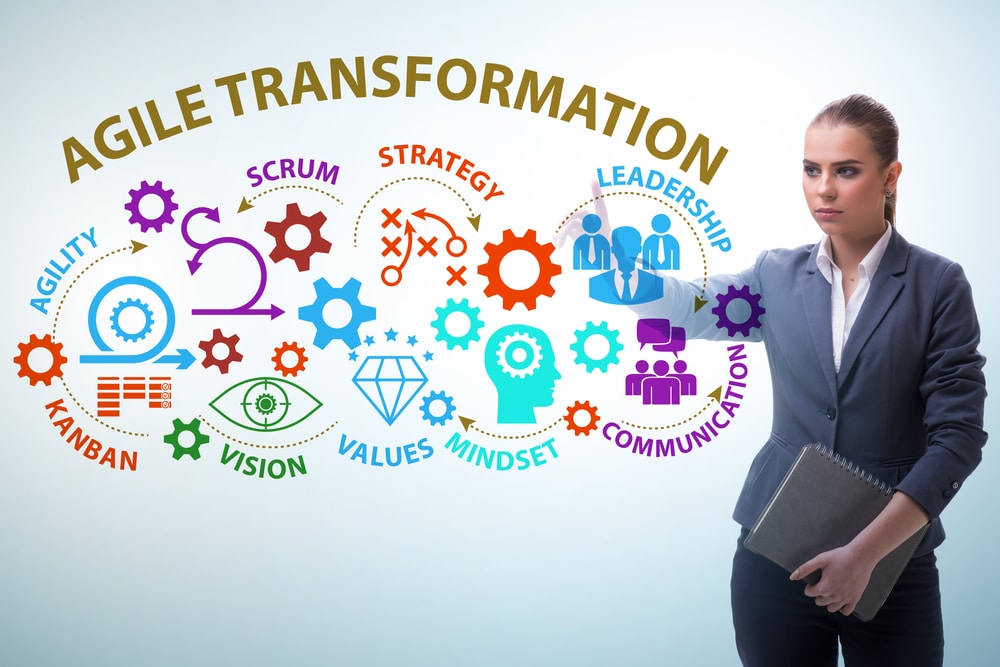
Core Principles of Agile
The agile manifesto, created in 2001, outlines core values guiding agile project management. These values prioritize people, working software, customer collaboration, and adaptability.
- Individuals and interactions over processes and tools
- Working software over comprehensive documentation
- Customer collaboration over contract negotiation
- Responding to change over following a plan
The agile manifesto includes 12 key principles emphasizing customer satisfaction and early delivery. It welcomes changing requirements and promotes frequent delivery of working software.
Collaboration between business people and developers is crucial. Projects are built around motivated individuals, with face-to-face communication being preferred.
Working software is the primary measure of progress. Teams maintain a sustainable pace and focus on technical excellence and good design.
Agile vs. Traditional Waterfall Approach
The traditional waterfall approach follows a sequential process with fixed requirements. Agile project management, however, embraces adaptive planning and iterative development.
Agile projects are divided into smaller, manageable chunks called “sprints” or iterations. This allows teams to work flexibly and adapt to shifting project requirements effectively.
| Agile Methodology | Traditional Waterfall Approach |
|---|---|
| Iterative and incremental process | Sequential and linear process |
| Flexible and adaptable to change | Fixed requirements and limited flexibility |
| Continuous delivery and feedback | Delivery at the end of the project |
| Collaboration and stakeholder engagement | Limited stakeholder involvement |
| Shorter timeframes and faster time to market | Longer timeframes and delayed delivery |
Agile project management thrives on continuous feedback loops. This enables adaptation and course correction throughout a project’s lifecycle. Cross-functional teams collaborate actively, ensuring projects align with customer needs.
Benefits of Implementing Agile in Project Management
Agile project management offers significant advantages to organizations, teams, and stakeholders. It enhances efficiency, creativity, and success through flexibility, collaboration, and continuous improvement. Companies can achieve new levels of performance by embracing these core Agile principles.

Increased Flexibility and Adaptability
Agile’s key benefit is its increased flexibility and adaptability. Teams can swiftly respond to changing requirements, market conditions, and customer feedback. This adaptability reduces project failure risk and enhances product relevance.
By embracing change and adjusting priorities, Agile teams mitigate risks effectively. They deliver value that aligns with evolving business needs, ensuring project success.
Faster Time to Market
Agile accelerates time-to-market by breaking projects into smaller increments. Teams deliver value iteratively, releasing working software or products in shorter cycles. This approach helps businesses seize opportunities and stay competitive.
Organizations adopting Agile experience 30-50% faster time to market compared to traditional methods. This speed allows companies to generate revenue more quickly.
Enhanced Stakeholder Engagement
Agile promotes collaboration and transparency, actively involving stakeholders in the development process. Regular meetings provide opportunities for feedback and feature prioritization. This engagement leads to higher customer satisfaction and employee morale.
Studies show Agile projects have a 25% higher stakeholder engagement rate than traditional approaches. This increased involvement ensures better alignment with project goals.
| Benefit | Agile | Traditional |
|---|---|---|
| Project Success Rate | 75% | 56% |
| On-Time Delivery | 65% | 40% |
| Defect Reduction | 30-50% | 10-20% |
| Productivity Increase | 20-40% | 5-10% |
The table above compares Agile and traditional project management benefits. Agile projects boast higher success rates and better on-time delivery. They also show significant defect reduction and notable increases in team productivity.
By adopting Agile practices, organizations can unlock these advantages. This approach drives greater efficiency, quality, and customer satisfaction in project management efforts.
Agile Frameworks and Methodologies
Organizations are always looking for ways to improve their processes and deliver quality products efficiently. Agile methodology offers various frameworks tailored to specific project needs and organizational contexts. With over fifty Agile frameworks available, understanding each one’s unique features is crucial.
This knowledge helps make informed decisions when implementing Agile in your organization. Each framework provides tools for enhancing efficiency, adaptability, and customer satisfaction in today’s fast-paced business world.

Scrum: The Most Popular Agile Framework
Scrum, used by 58% of companies, is the most widely adopted Agile framework. Jeff Sutherland and Ken Schwaber introduced it in 1995. It emphasizes specific roles, artifacts, and ceremonies to facilitate iterative development and continuous improvement.
The key scrum roles include:
- Product Owner: Responsible for defining and prioritizing the product backlog
- Scrum Master: Facilitates the Scrum process and removes obstacles for the team
- Development Team: Cross-functional group that delivers the product increment
Scrum artifacts, like the product and sprint backlogs, help manage requirements and track progress. The framework includes four essential sprint ceremonies:
- Sprint Planning
- Daily Standups
- Sprint Review
- Retrospective
These ceremonies ensure effective communication, collaboration, and continuous improvement throughout the development process.
Kanban: Visualizing Workflow
Kanban, used by 43% of organizations, focuses on visualizing workflow and limiting work in progress. It aims to improve efficiency and reduce waste. Kanban boards represent the workflow, helping teams identify bottlenecks and manage capacity.
Kanban operates without backlogs, focusing on continuous releases and immediate progression after completing tasks. Work in Progress (WIP) limits are set to facilitate efficient workflow management. The four essential components of Kanban are:
- List of work (stories)
- Columns or Lanes
- Work in Progress Limits (WIP)
- Continuous Releases
Lean: Maximizing Value, Minimizing Waste
Lean, used by 17% of companies, is derived from lean manufacturing principles. It aims to maximize value while minimizing waste. Lean principles emphasize delivering fast, eliminating waste, and showing respect for people.
Other key aspects include creating knowledge, building quality, optimization, deferring commitment, and fostering continuous improvement.
“Lean thinking is not about doing more with less. It is about doing more with less waste.”
Lean helps organizations streamline operations and deliver greater value to customers. It does this by continuously identifying and eliminating non-value-added activities in the development process.
| Framework | Key Features | Adoption Rate |
|---|---|---|
| Scrum | Roles, artifacts, and ceremonies for iterative development | 58% |
| Kanban | Visualizing workflow, limiting WIP, and optimizing flow | 43% |
| Lean | Maximizing value, minimizing waste, and continuous improvement | 17% |
Understanding each Agile framework’s unique features helps organizations make informed decisions. Scrum offers a structured approach, Kanban provides visual workflow management, and Lean focuses on value-driven principles. Each framework enhances project management processes in different ways.
Implementing Agile in Your Organization

Implementing Agile requires a shift in mindset, culture, and processes. Successful adoption involves identifying projects and teams for piloting. Providing training and support is crucial. Gradually scaling Agile practices across the organization is essential.
Recent statistics show the main obstacle is establishing an Agile culture within organizations. This emphasizes the importance of change management. Fostering a culture that embraces Agile values and principles is key.
Consider these key steps for Agile transformation:
- Assess your organization’s readiness by evaluating processes, team dynamics, and stakeholder buy-in.
- Define Agile roles and responsibilities, such as Scrum Masters, Product Owners, and development teams.
- Establish Agile metrics and performance indicators to track progress and identify areas for improvement.
- Foster a culture of continuous improvement through regular retrospectives and ongoing training.
“Agile transformation is not just about changing processes; it’s about empowering people and creating a culture of collaboration, transparency, and adaptability.”
Successful implementation requires strong executive sponsorship and effective change management. Leaders must champion the Agile mindset and communicate its benefits. Providing necessary resources and support for teams is crucial.
| Traditional Project Management | Agile Project Management |
|---|---|
| Rigid, linear processes | Flexible, iterative processes |
| Siloed communication | Frequent collaboration and transparency |
| Capacity utilization focus | Flow efficiency focus |
| Timeline-driven | Queue size management |
Agile transformation is an iterative process requiring patience and persistence. It demands a willingness to learn and adapt. Embracing Agile values and continuously improving practices yields significant benefits.
Organizations can expect increased flexibility and faster time to market. Enhanced stakeholder engagement is another advantage of successful Agile implementation.
Best Practices for Successful Agile Project Management
Successful Agile project management hinges on proven best practices. These include fostering collaboration, embracing continuous improvement, and using the right tools. Agile teams thrive in environments that promote teamwork and innovation.
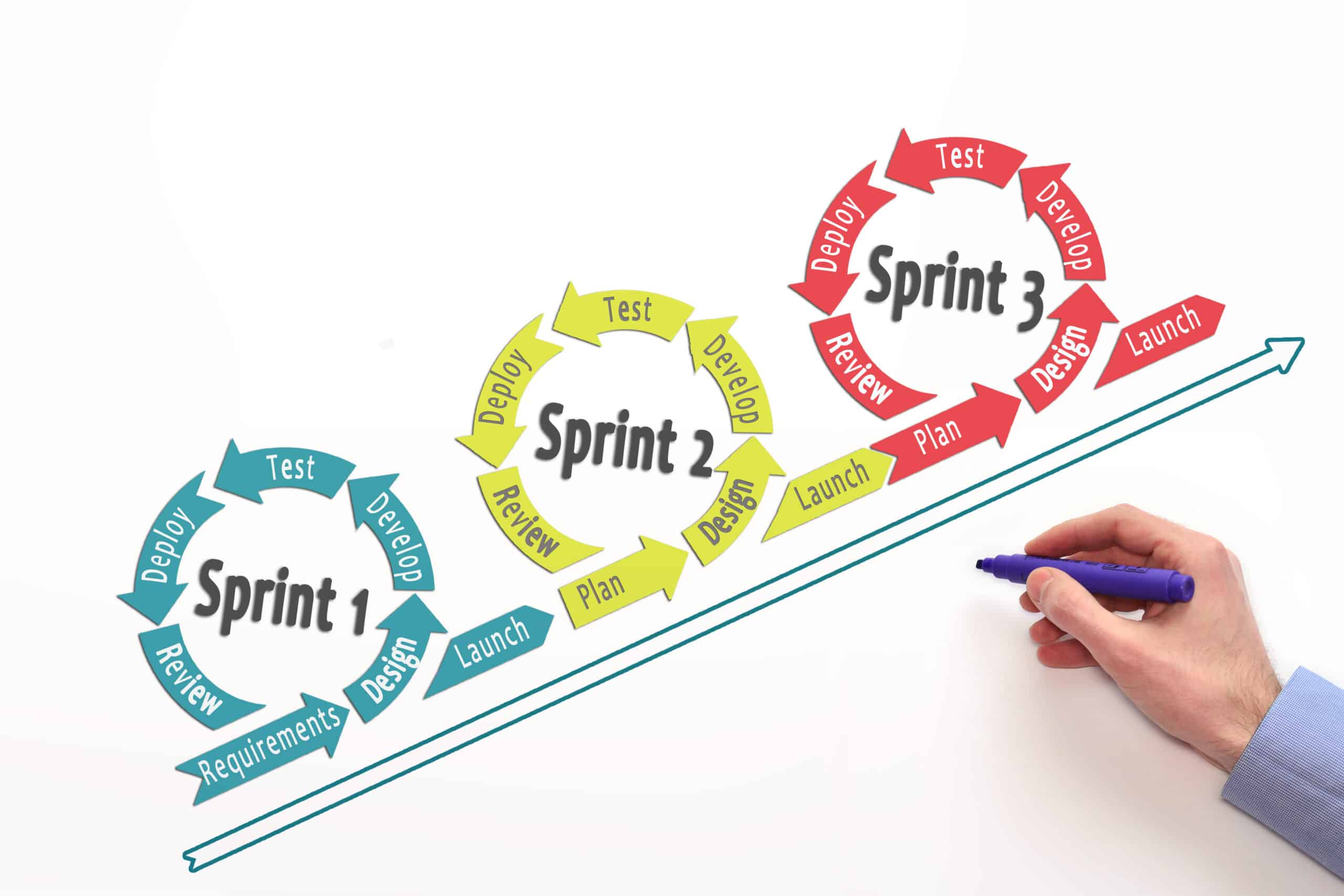
Fostering a Collaborative Team Environment
Agile emphasizes self-organizing teams. Empowering members to make decisions fosters creativity and innovation. Agile teams typically consist of three to 10 skilled individuals working closely together.
To boost collaboration, consider these practices:
- Encourage open communication and transparency
- Facilitate regular team meetings and discussions
- Promote a culture of trust and respect
- Celebrate successes and learn from failures together
Embracing Continuous Improvement
Agile methodology thrives on continuous improvement. Teams regularly reflect on processes and identify growth areas. Retrospective meetings are powerful tools for facilitating this improvement.
“Agile teams deliver working software frequently, from a couple of weeks to a couple of months, with a preference for shorter timescales.”
During retrospectives, teams discuss successes, challenges, and potential improvements. Open feedback sharing helps teams evolve and deliver better results. At PMtech Digital Solutions, we believe continuous improvement drives long-term Agile success.
Leveraging Agile Tools and Technologies
Effective Agile project management requires the right tools. Platforms like JIRA, Trello, and monday.com help teams plan, track, and visualize work. These tools ensure alignment and keep everyone on track.
| Tool | Key Features |
|---|---|
| JIRA | Issue tracking, project planning, customizable workflows |
| Trello | Visual task management, collaboration, easy organization |
| monday.com | Customizable templates, automations, integrations |
Implementing continuous integration and deployment practices enhances software delivery. Automating build, test, and deployment processes catches issues early. This ensures software remains in a releasable state.
Combining collaboration, continuous improvement, and the right tools sets Agile projects up for success. These practices help deliver exceptional results for clients and stakeholders.
Real-World Examples of Agile Success Stories
Agile methods have transformed project management across industries. Organizations now achieve remarkable success by embracing Agile principles. These principles streamline processes, boost collaboration, and deliver high-quality products faster. Let’s explore inspiring Agile case studies that showcase its transformative power.
Spotify, the leading music streaming platform, has scaled Agile practices effectively. They’ve created a culture of collaboration and improvement through autonomous squads and tribes. This approach allows Spotify to stay ahead in a competitive market.
Amazon leverages Agile to develop and launch new products quickly. Their customer-centric approach and Agile mindset drive incredible growth. Amazon consistently delivers innovative solutions that exceed customer expectations.
Salesforce attributes its success to effective Agile implementation. This approach allows them to respond swiftly to customer needs and market changes. Salesforce maintains a competitive edge by delivering continuous value to customers.
| Company | Agile Success Story |
|---|---|
| Sky | Embraced Agile software development in 2005, replacing Waterfall method |
| VistaPrint | Decreased project lead time from 40 to 15 days after switching to Agile |
| BBVA | Introduced Agile practices in Spain and the USA, resulting in rapid software delivery |
| JP Morgan Chase | Increased staff in low-cost sites from 26% to 40% using Agile methodology |
These Agile case studies show tangible benefits across various sectors. Organizations have seen increased productivity and faster time-to-market. They’ve also experienced improved collaboration and employee satisfaction by embracing Agile practices.
“Agile has transformed the way we work, enabling us to deliver value to our customers faster and more efficiently than ever before.” – Lonely Planet CEO
Agile continues to gain traction as more companies recognize its advantages. Organizations can unlock their full potential by learning from these success stories. Adapting Agile principles to unique contexts achieves remarkable results in today’s fast-paced business environment.
Overcoming Challenges in Agile Project Management
Agile project management excels in software development and IT projects. However, it comes with its own set of obstacles. Recognizing these challenges is crucial for maximizing Agile’s potential. Let’s explore strategies to tackle these hurdles head-on.
Change resistance is a major roadblock in Agile adoption. Teams often cling to familiar processes, fearing the unknown. Effective communication and training are key to overcoming this hurdle. Clearly explaining Agile’s benefits can help teams appreciate its value in enhancing work processes.
Comprehensive support is essential for teams to embrace the Agile methodology. By addressing concerns and showcasing positive outcomes, we can ease the transition to Agile practices.

Resistance to Change
Shifting from traditional waterfall methods to Agile’s iterative approach can be challenging. Overcoming this resistance requires a multi-faceted strategy. Open dialogue and addressing concerns are crucial steps in this process.
- Communicating the benefits of Agile and how it can improve project outcomes
- Providing comprehensive training and support to help teams understand and adopt Agile practices
- Encouraging open dialogue and addressing concerns or questions about the transition
- Celebrating successes and sharing positive results to reinforce the value of Agile
Lack of Agile Knowledge and Experience
Limited Agile expertise within an organization poses significant challenges. Teams new to Agile may struggle with its principles and practices. This knowledge gap can lead to misinterpretation and suboptimal results.
Investing in Agile training and coaching is crucial to bridging this gap. Equipping team members with necessary skills ensures a solid foundation for success in an Agile environment.
| Challenge | Strategy |
|---|---|
| Undefined Project Objectives | Define Clear Goals |
| Handling Evolving Requirements | Prioritize and Communicate Goals |
| Communication and Collaboration Obstacles | Encourage Open Communication |
| Resource Allocation and Availability Constraints | Prioritize Resource Allocation |
| Managing Flexibility with Control | Define Project Guidelines |
| Handling Change Resistance | Implement Change Management |
| Scaling Agile for Larger Teams | Adopt Scaling Frameworks |
| Legacy HR Practices | Align HR Practices with Agile Principles |
Proactively addressing these challenges is key to unlocking Agile’s true potential. Breaking down organizational silos fosters a culture of collaboration. Continuous learning and agile coaching drive improvement and exceptional project results.
Project Management and Agile Methodology: A Powerful Combination
Organizations seek ways to optimize project management processes in today’s fast-paced business world. Combining traditional practices with agile methods yields remarkable results. PMtech Digital Solutions leads in helping businesses harness this powerful combination.
PMI research shows highly agile companies often adopt a hybrid approach. They blend agile, predictive, and hybrid methodologies. Less agile organizations rely more on traditional waterfall methods. Embracing agile benefits alongside proven practices enhances flexibility, adaptability, and success rates.
“At PMtech Digital Solutions, we believe that the key to successful project delivery lies in finding the right balance between structure and agility. By leveraging the strengths of both traditional and agile approaches, our clients can optimize their processes and achieve their goals more efficiently.”
Agile methodology focuses on iterative cycles and continuous feedback. This approach allows quick responses to changes and incremental value delivery. However, agile projects still need a strong foundation of best practices.
These include clear scope definition, effective communication, and risk management. Quality assurance, testing, and continuous improvement are also crucial. Integrating these practices with agile principles creates a powerful synergy for project success.
- Clear project scope definition
- Effective communication and collaboration
- Risk management and mitigation strategies
- Quality assurance and testing
- Continuous improvement and learning
PMtech Digital Solutions develops customized frameworks for clients. These leverage strengths of both traditional and agile approaches. Our solutions are tailored to specific needs and goals.
| Approach | Highly Agile Companies | Less Agile Companies |
|---|---|---|
| Agile Methods | 68% | 41% |
| Predictive Methods | 71% | 45% |
| Hybrid Methodologies | 72% | 51% |
PMI research shows growing adoption of agile benefits among highly agile companies. These organizations blend methodologies to navigate modern project delivery challenges. They’re well-positioned to achieve superior results.
PMtech Digital Solutions’ experienced team helps clients unlock the potential of combined methodologies. Our services include consulting, training, and support. We empower organizations to optimize processes, enhance collaboration, and drive successful outcomes.
Conclusion
Agile adoption is vital for organizations aiming to achieve business agility and project success. Embracing core Agile principles helps teams navigate complex projects efficiently. These principles include flexibility, adaptability, and customer collaboration.
Implementing Agile in project management offers numerous benefits. It increases flexibility and speeds up time to market. Additionally, it enhances stakeholder engagement and improves team collaboration. Agile frameworks like Scrum and Kanban foster continuous improvement.
Adopting Agile may present challenges, such as resistance to change. However, the long-term benefits outweigh initial hurdles. Investing in Agile training and fostering collaboration unlocks this approach’s full potential.
Combining project management best practices with Agile methodologies is powerful. It helps organizations thrive in today’s competitive business environment. Teams can achieve remarkable levels of agility, success, and customer satisfaction through continuous refinement.
Frequently Asked Questions
What is Agile methodology, and how does it differ from traditional project management approaches?
Agile methodology is a flexible, collaborative approach to project management. It emphasizes customer input and incremental delivery. Unlike traditional waterfall methods, Agile divides projects into small, manageable sprints. This allows for regular feedback and faster market delivery.
What are the core principles of Agile methodology?
The Agile Manifesto outlines key principles prioritizing people over processes and working software over extensive documentation. It values customer collaboration and adapting to change. Agile focuses on iterative development, continuous delivery, and cross-functional team collaboration.
What are the benefits of implementing Agile in project management?
Agile implementation offers increased flexibility and faster time-to-market. It enhances stakeholder engagement, mitigates risks, and improves customer satisfaction. Teams can deliver value iteratively, seize opportunities, and maintain a competitive edge. Agile also boosts employee morale through collaborative work environments.
What are some popular Agile frameworks and methodologies?
Popular Agile frameworks include Scrum, Kanban, and Lean. Scrum uses roles, artifacts, and ceremonies for iterative development. Kanban visualizes workflow and optimizes task flow. Lean aims to maximize value by eliminating non-value-added activities.
How can an organization successfully implement Agile?
Successful Agile implementation requires a shift in mindset, culture, and processes. Key steps include assessing readiness, defining roles, and establishing metrics. Providing training and fostering continuous improvement are crucial. Strong executive sponsorship and effective change management support the transition.
What are some best practices for successful Agile project management?
Successful Agile project management fosters collaboration and embraces continuous improvement through regular retrospectives. Leveraging tools like JIRA, Trello, or monday.com enhances efficiency. Self-organizing teams should focus on delivering customer value. Continuous integration ensures frequent, reliable software delivery.
What are some common challenges in implementing Agile, and how can they be overcome?
Common Agile implementation challenges include resistance to change and lack of experience. Effective communication and training help teams understand Agile benefits. Investing in coaching and mentoring bridges knowledge gaps. Providing necessary support ensures teams have the skills to succeed.
How can traditional project management best practices be combined with Agile methodologies?
Combining traditional and Agile methodologies creates a powerful project delivery approach. This balance achieves planning, structure, flexibility, and adaptability to meet unique project needs. PMtech Digital Solutions offers tailored consulting services to help organizations navigate this combination effectively.
What are user stories, and how are they used in Agile projects?
User stories are concise descriptions of features from an end-user perspective. They capture requirements and prioritize work based on customer value. The format is: “As a [user], I want [goal] so that [reason].” Teams use these stories for discussion, estimation, and sprint planning.
What is the role of a Product Owner in Scrum?
In Scrum, the Product Owner maximizes product value and team work. They manage the Product Backlog, expressing and prioritizing items clearly. The Product Owner collaborates with stakeholders to gather requirements and make product decisions. They ensure the Development Team understands backlog items

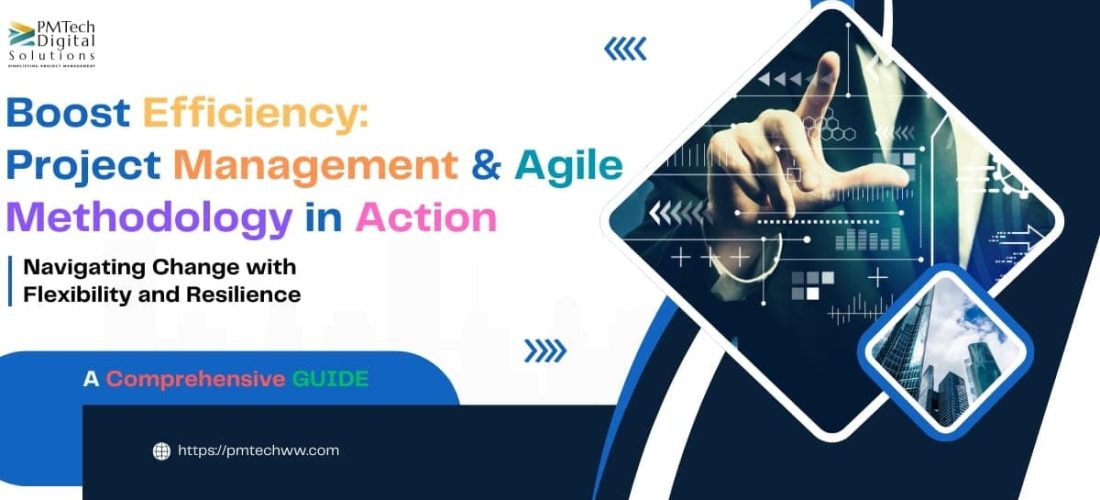




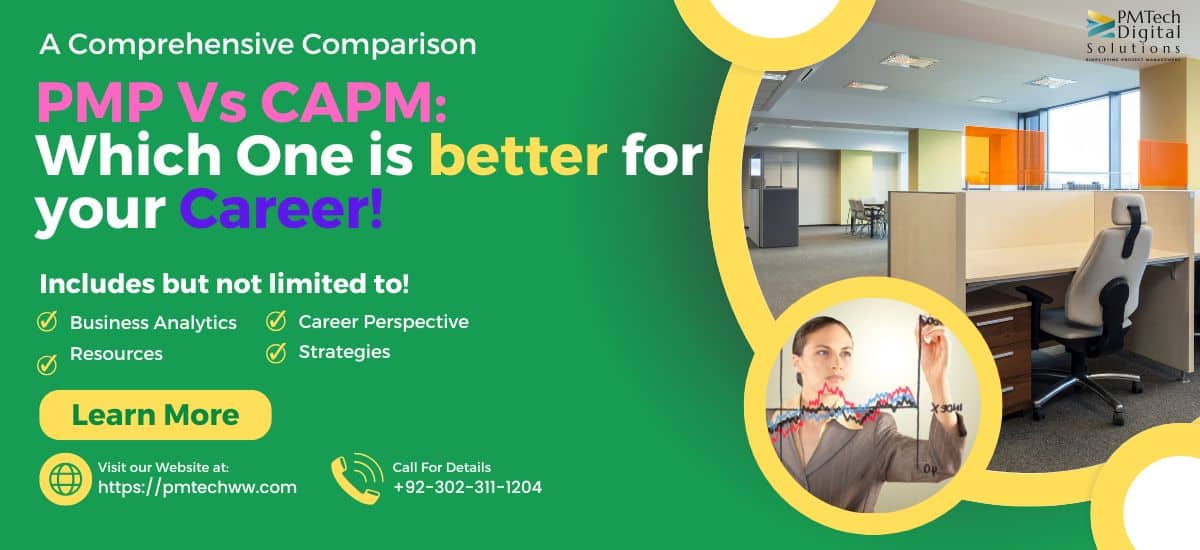




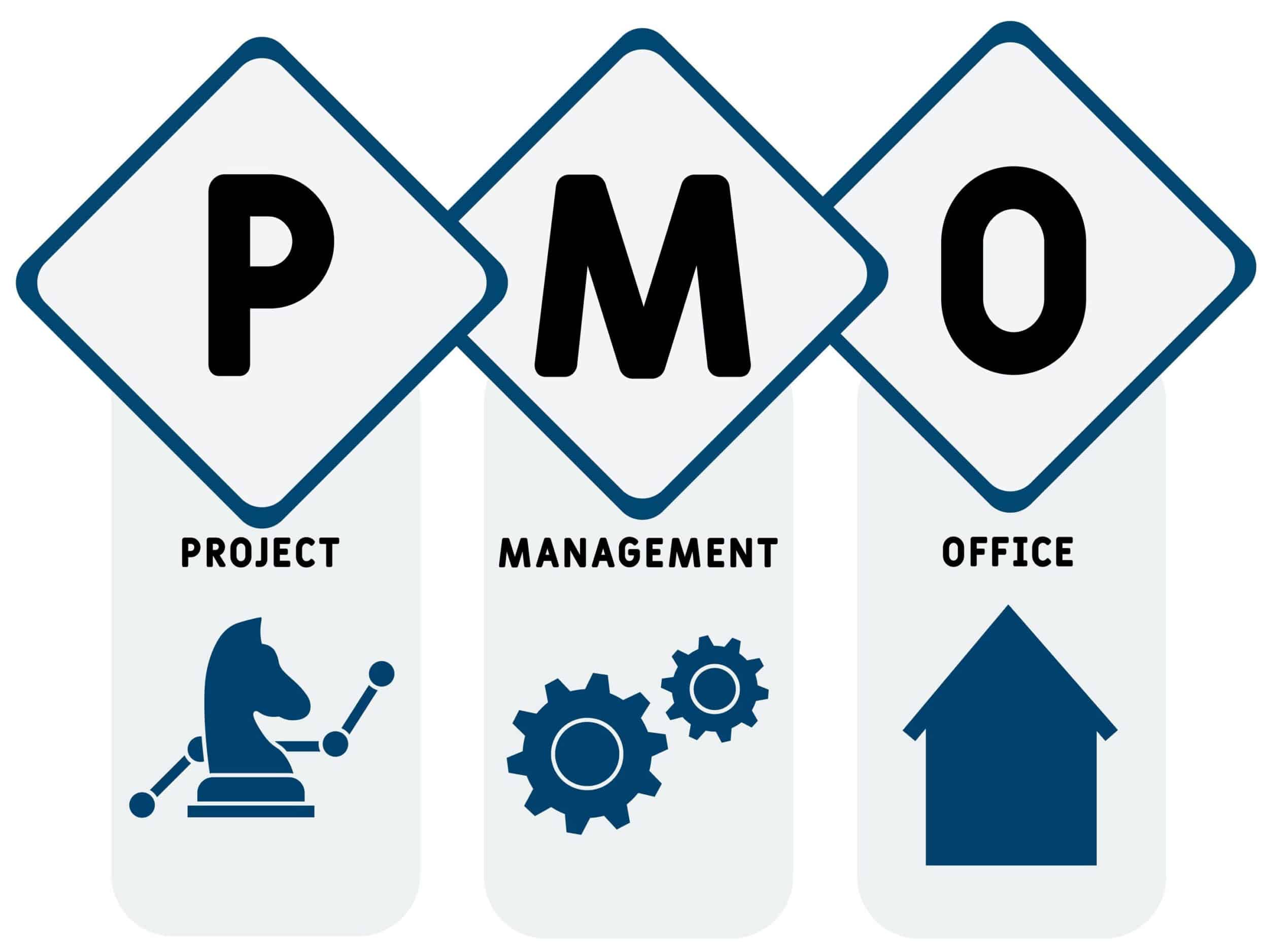
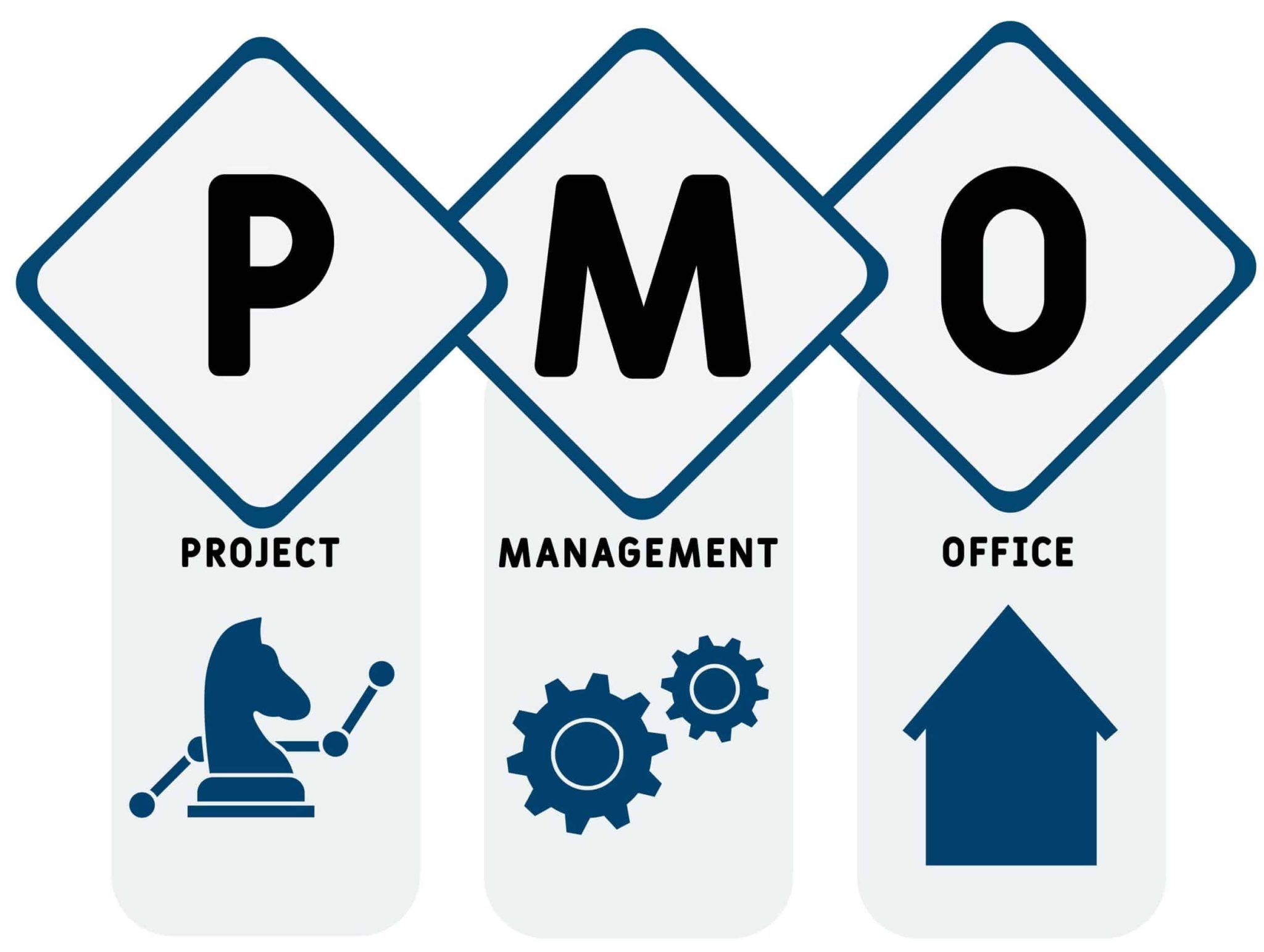
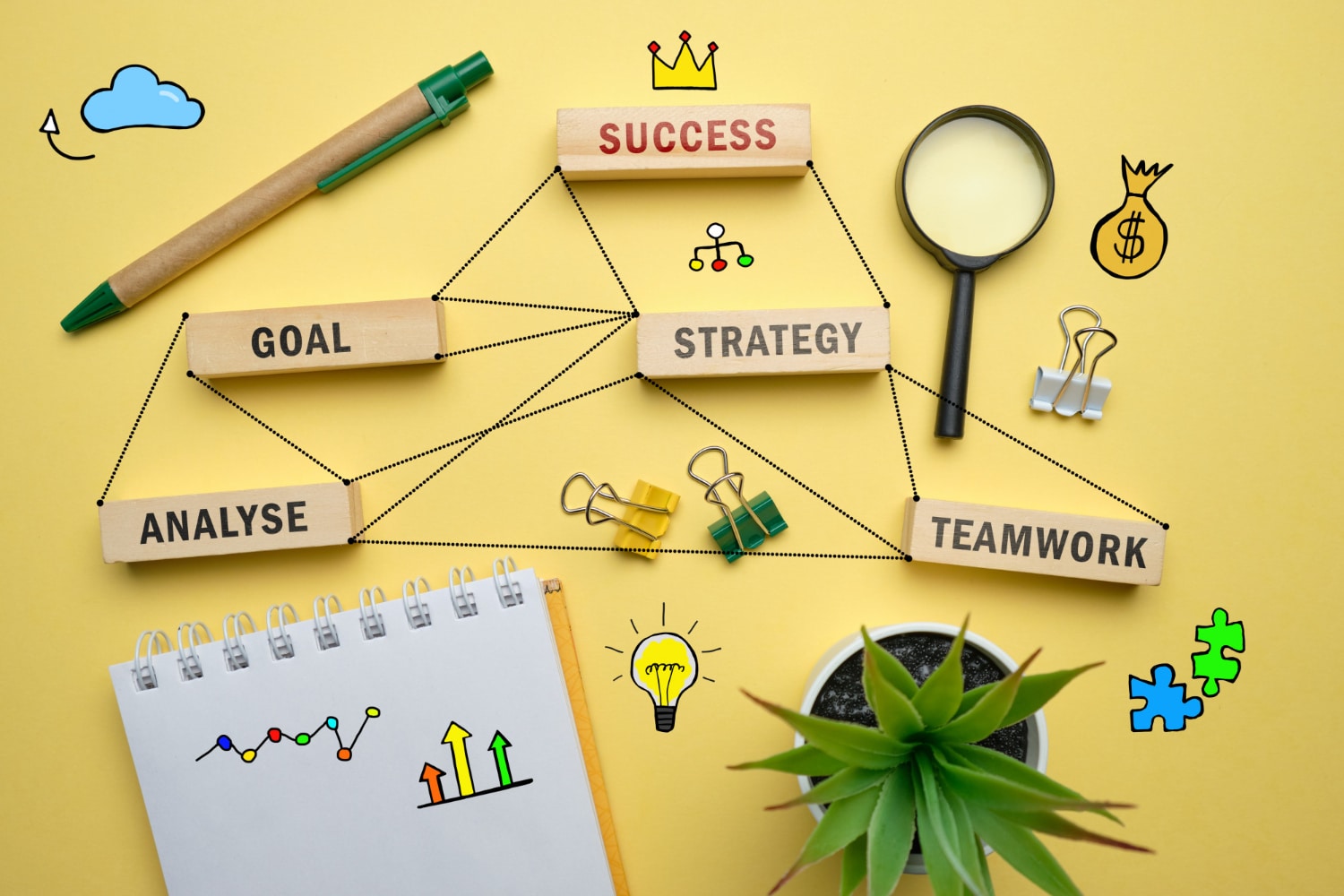



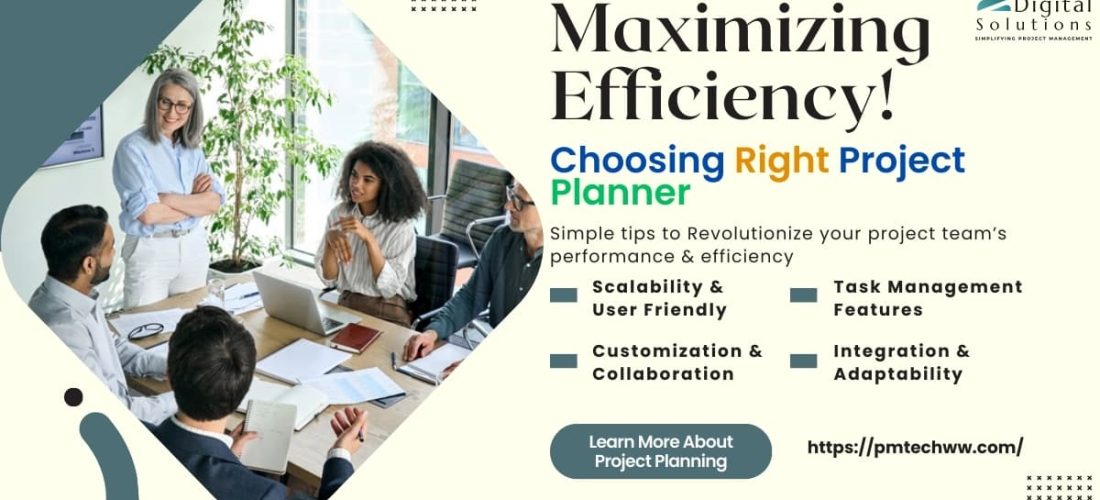
131 Responses
Can you be more specific about the content of your article? After reading it, I still have some doubts. Hope you can help me.
Your point of view caught my eye and was very interesting. Thanks. I have a question for you.
Thanks for sharing. I read many of your blog posts, cool, your blog is very good.
Thanks for sharing. I read many of your blog posts, cool, your blog is very good.
I’m really impressed with your writing abilities and also with the format in your blog. Is that this a paid subject or did you customize it your self? Anyway keep up the nice quality writing, it’s rare to see a nice blog like this one nowadays!
услуги по продаже аккаунтов продажа аккаунтов
маркетплейс для реселлеров безопасная сделка аккаунтов
биржа аккаунтов https://magazin-akkauntov-online.ru
безопасная сделка аккаунтов безопасная сделка аккаунтов
биржа аккаунтов магазин аккаунтов
маркетплейс аккаунтов https://kupit-akkaunt-top.ru/
маркетплейс аккаунтов соцсетей маркетплейс для реселлеров
Website for Selling Accounts Account Sale
Account marketplace Account Selling Platform
Account Trading Platform Buy and Sell Accounts
Accounts marketplace Account Trading
Account trading platform Online Account Store
Online Account Store Buy and Sell Accounts
Ready-Made Accounts for Sale Gaming account marketplace
Account Market Account market
Account Market Sell Pre-made Account
Account Buying Platform Marketplace for Ready-Made Accounts
account sale verified accounts for sale
sell accounts buy account
account exchange account catalog
account trading service account selling service
purchase ready-made accounts account exchange service
account trading platform marketplace for ready-made accounts
account purchase sell pre-made account
database of accounts for sale account exchange
account selling service purchase ready-made accounts
accounts marketplace account acquisition
marketplace for ready-made accounts accounts-marketplace.org
website for selling accounts account store
buy pre-made account account buying platform
account buying service account selling service
ready-made accounts for sale accounts market
Hey, I think your blog might be having browser compatibility issues.
When I look at your blog in Ie, it looks fine but when opening in Internet Explorer, it has some overlapping.
I just wanted to give you a quick heads up!
Other then that, superb blog!
Look at my web blog :: nordvpn coupons inspiresensation (shorter.me)
sell pre-made account accounts marketplace
online account store account trading platform
account market account trading platform
social media account marketplace ready-made accounts for sale
account trading service account purchase
purchase ready-made accounts website for selling accounts
buy pre-made account buy pre-made account
account selling service account catalog
account acquisition verified accounts for sale
account sale account market
account exchange service buy pre-made account
350fairfax nordvpn code
Thanks on your marvelous posting! I genuinely enjoyed reading
it, you might be a great author. I will make certain to bookmark your blog and will eventually come back sometime soon.
I want to encourage you to ultimately continue your great
job, have a nice holiday weekend!
account market https://accounts-offer.org/
sell accounts https://accounts-marketplace.xyz
account purchase https://buy-best-accounts.org/
website for selling accounts https://social-accounts-marketplaces.live
social media account marketplace accounts-marketplace.live
buy accounts buy accounts
accounts market https://buy-accounts.space
account marketplace https://buy-accounts-shop.pro/
find accounts for sale https://buy-accounts.live
account trading platform account marketplace
account exchange service account marketplace
покупка аккаунтов https://akkaunty-na-prodazhu.pro
площадка для продажи аккаунтов https://rynok-akkauntov.top
маркетплейс аккаунтов kupit-akkaunt.xyz
магазин аккаунтов https://akkaunt-magazin.online/
продать аккаунт https://akkaunty-market.live
продажа аккаунтов https://kupit-akkaunty-market.xyz
покупка аккаунтов https://akkaunty-optom.live
продать аккаунт https://online-akkaunty-magazin.xyz
купить аккаунт маркетплейсов аккаунтов
маркетплейс аккаунтов соцсетей kupit-akkaunt.online
buy aged fb account https://buy-adsaccounts.work/
buy facebook profile https://buy-ad-accounts.click/
cheap facebook advertising account https://buy-ad-account.top
buy facebook ads manager https://buy-ads-account.click
facebook ad account buy https://ad-account-buy.top
facebook ads account for sale https://buy-ads-account.work
facebook account buy https://ad-account-for-sale.top
Эта статья сочетает познавательный и занимательный контент, что делает ее идеальной для любителей глубоких исследований. Мы рассмотрим увлекательные аспекты различных тем и предоставим вам новые знания, которые могут оказаться полезными в будущем.
Изучить вопрос глубже – https://medalkoblog.ru/
buy facebook account buying facebook account
buy facebook account https://ad-accounts-for-sale.work
buy google ads verified account https://buy-ads-account.top/
buy aged google ads account google ads agency account buy
buy fb account https://buy-accounts.click/
buy google ads agency account https://ads-account-for-sale.top/
buy verified google ads accounts https://ads-account-buy.work
buy verified google ads account buy-ads-invoice-account.top
google ads account buy https://buy-account-ads.work
buy google ad account https://buy-ads-agency-account.top
buy google ads invoice account https://sell-ads-account.click
buy aged google ads accounts https://ads-agency-account-buy.click
buy facebook ads accounts and business managers buy-business-manager.org
buy verified google ads account buy google ads threshold accounts
buy business manager https://buy-bm-account.org
buy facebook verified business account https://buy-verified-business-manager-account.org/
buy bm facebook buy-verified-business-manager.org
buy facebook verified business manager buy facebook bm account
buy facebook business managers https://business-manager-for-sale.org/
facebook bm buy https://buy-business-manager-verified.org
business manager for sale https://buy-bm.org/
facebook business manager for sale buy facebook business account
buy facebook bm https://buy-business-manager-accounts.org/
tiktok ads agency account https://buy-tiktok-ads-account.org
buy tiktok business account https://tiktok-ads-account-buy.org
tiktok ads account buy buy tiktok ads account
buy tiktok ads accounts https://tiktok-agency-account-for-sale.org
tiktok ad accounts https://buy-tiktok-ad-account.org
tiktok agency account for sale https://buy-tiktok-ads-accounts.org
buy tiktok ad account https://tiktok-ads-agency-account.org
buy tiktok ad account https://buy-tiktok-business-account.org
buy tiktok ads accounts https://buy-tiktok-ads.org
Your point of view caught my eye and was very interesting. Thanks. I have a question for you. https://accounts.binance.com/da-DK/register?ref=V2H9AFPY
Great blog! Do you have any helpful hints for aspiring writers?
I’m planning to start my own website soon but I’m a little lost on everything.
Would you advise starting with a free platform like WordPress or go for a paid option? There are so many options out there that
I’m totally overwhelmed .. Any tips? Many thanks!
Here is my web blog eharmony Special coupon code 2025
With havin so much content do you ever run into
any problems of plagorism or copyright violation? My blog has a
lot of unique content I’ve either created myself or outsourced but it looks like a lot of it is popping it up all over the internet without my authorization. Do you know
any methods to help stop content from being stolen? I’d really appreciate it.
Here is my blog: Vpn
facebook ad account buy accounts marketplace ready-made accounts for sale
buy ad account facebook accounts marketplace account trading
naturally like your web site however you need to take a look at the spelling on several of your posts. A number of them are rife with spelling problems and I find it very bothersome to tell the truth on the other hand I will surely come again again.
Hi there to all, for the reason that I am genuinely keen of reading this website’s post to be updated on a regular basis. It carries pleasant stuff.
May I simply say what a comfort to find an individual
who actually knows what they are discussing online.
You certainly understand how to bring an issue to light and
make it important. More and more people have to check this out and understand this side
of the story. I was surprised you are not more popular because you surely have the gift.
gamefly 3 month free trial https://tinyurl.com/23ww4xyv
This is really interesting, You’re a very skilled blogger. I’ve joined your feed and look forward to seeking more of your magnificent post. Also, I’ve shared your site in my social networks!
I really like reading through a post that can make men and women think. Also, thank you for allowing me to comment!
I just like the helpful information you provide in your articles
My partner and I stumbled over here from a different web page and thought
I might check things out. I like what I see so now i
am following you. Look forward to looking at your web page for a
second time. What does a vpn do https://tinyurl.com/2y95dtjr
I every time spent my half an hour to read this webpage’s posts
everyday along with a cup of coffee.
Hi my loved one! I want to say that this post is awesome, great
written and include approximately all vital infos.
I’d like to peer more posts like this .
Can you be more specific about the content of your article? After reading it, I still have some doubts. Hope you can help me.
Terrific work! That is the kind of info that should be shared
around the web. Shame on Google for not positioning this
post upper! Come on over and visit my website . Thank you =) https://tinyurl.com/ymjk7uac eharmony special coupon code 2025
Great beat ! I wish to apprentice while you amend your site, how could i subscribe for a blog web
site? The account helped me a acceptable deal.
I had been a little bit acquainted of this your broadcast provided bright
clear concept
Here is my web blog http://winkler-martin.de/messages/61849.html
Why users still use to read news papers when in this technological
world the whole thing is existing on net?
Feel free to surf to my blog: https://tinyurl.com/2p9t75b8
Kg88bet… Not the prettiest website I’ve seen, but hey, if it works, it works, right? Good selection on sports, especially football. That’s where my money goes, anyway. More info at kg88bet.